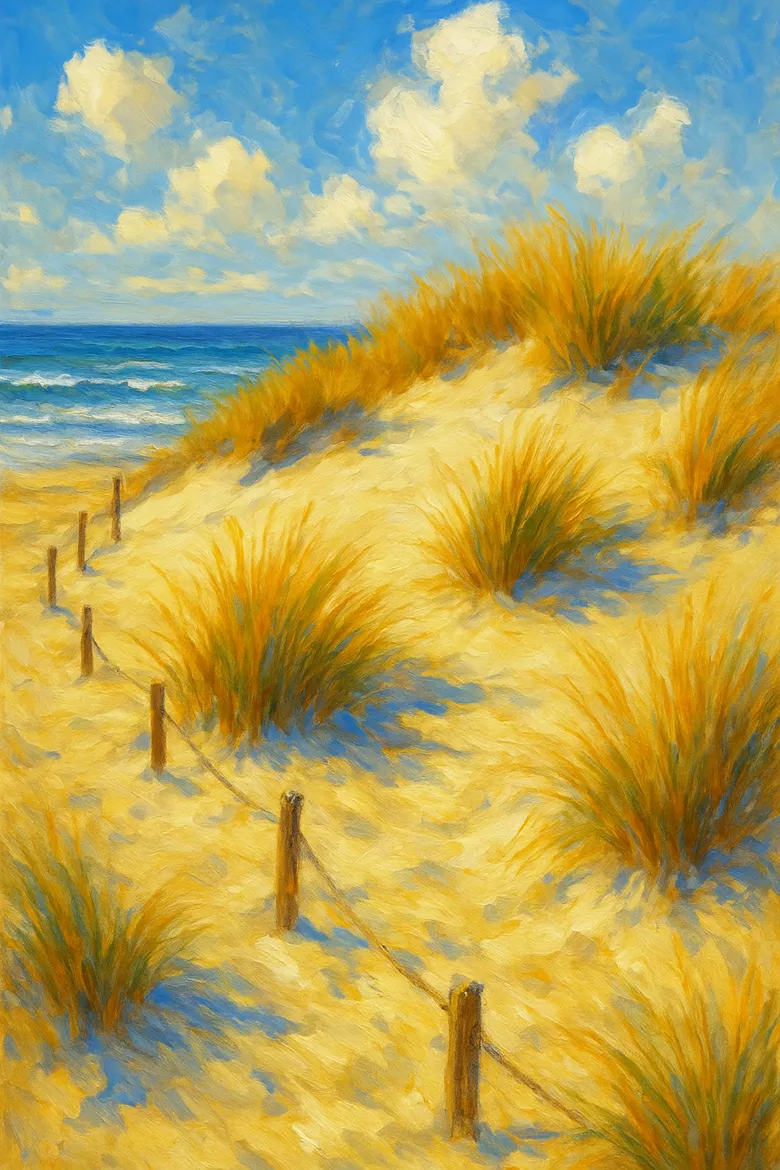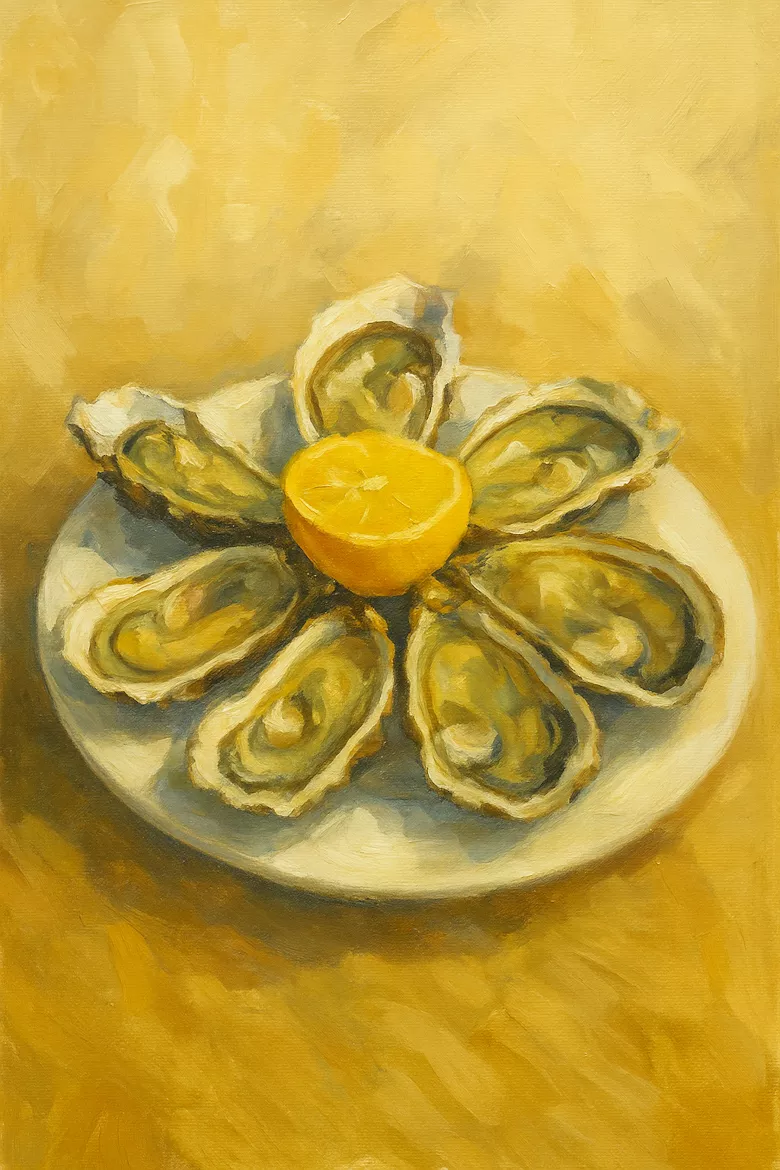Oléron Island (Île d’Oléron), the second-largest island of metropolitan France after Corsica, stretches along the Atlantic coast in the Charente-Maritime department.
In a world that often moves too fast, Oléron Island invites you to slow down. To smell the sea air. To watch boats sway in fishing harbors. To stroll barefoot in golden sand at sunset. To chat with proud oyster farmers who carry on centuries-old traditions. To reconnect: with nature, with simplicity, perhaps with yourself.
Nicknamed “Oléron la lumineuse” (Oléron the luminous) for its exceptional sunshine comparable to southern Provence, the island is a seductive blend of wild nature, oyster-farming traditions, endless sandy beaches, and lively maritime villages. Linked to mainland France by a 3-kilometer bridge from Bourcefranc-le-Chapus, Oléron is beautiful destination.
In recent years, Oléron Island has gained popularity as a preferred holiday destination for families, eco-tourists, and slow-travel enthusiasts. Yet despite its success, it preserves a rare authentic charm, offering visitors the chance to reconnect with nature and rediscover a slower, more meaningful rhythm of life.
Table of Contents
A Natural Paradise on the Atlantic Coast
Oléron Island boasts exceptional geographic diversity. From salt marshes to pine forests, from dunes to oyster basins, the landscape changes every few kilometers: each corner telling its own story.
The island is part of the Marais Poitevin Regional Natural Park and home to rich biodiversity. Birdwatchers gather here to observe herons, egrets, and migratory birds that pause in the marshlands. Nature lovers roam the Sables-Vigniers dunes, protected for their fragile ecosystem. Cyclists ride along nearly 160 kilometers of bike paths, some winding through towering pine forests, others offering cliffside views of the Atlantic Ocean.

If Ré Island is often seen as elegant and refined, Oléron Island stands out for its wild, unspoiled soul. There are no grand seaside palaces here, no flashy marinas or luxury boutiques. Instead, authenticity speaks through colorful fishing huts, sea winds carrying the scent of wild thyme, and the call of seagulls silhouetted against sunsets.
A Land of Oyster-Farmers and Maritime Traditions
To understand Oléron, one must discover its oyster-farming culture. This is the homeland of the Marennes-Oléron oysters, famous worldwide for their refined green tint and unique flavor acquired in local “claires” — shallow basins used to refine oysters.
Villages like La Cotinière, Le Château-d’Oléron, and Boyardville are dotted with oyster huts, often painted in bright colors and converted into galleries, artists’ workshops, and small tasting bars. Here, oysters are served simply: with bread, butter, and a glass of chilled white Charentais wine. It’s not just a meal; it’s a ritual, a celebration of maritime identity.
Fishing is also deeply rooted in the island’s DNA. La Cotinière, the island’s main fishing port, ranks among France’s top artisanal ports. Every morning, dozens of boats unload monkfish, langoustines, sole, and langoustes. Watching the market in action offers a genuine glimpse into Oléron’s working life — far from tourist clichés.
Must-See Places on Oléron Island
The Village of Saint-Pierre-d’Oléron
The island’s unofficial capital is a lively town with markets, cafés, and narrow streets lined with whitewashed houses. Its market hall is a feast of regional products: pineau des Charentes, creamy goat cheese, seafood, and honey from local apiaries.
The Citadel of Le Château-d’Oléron
Built in the 17th century under Vauban, this imposing military structure overlooks the Pertuis d’Antioche strait. Inside its massive stone walls now live a vibrant community of artisans — sculptors, painters, ceramicists — making it both a historical site and a cultural hub.
Boyardville and the View of Fort Boyard
From Boyardville, visitors enjoy breathtaking views of Fort Boyard, the iconic stone fortress that became famous thanks to the global TV show. Boat cruises from Boyardville or Saint-Denis-d’Oléron offer close passes around the fort.
La Cotinière Port
This fishing village embodies the maritime soul of Oléron. With its colorful boats and lively quays, La Cotinière is the perfect place to stroll at sunset before enjoying fresh seafood in a harbor-side restaurant.
The Chassiron Lighthouse
Perched on the island’s northern tip, the Chassiron Lighthouse has watched over sailors since 1836. Visitors climb 224 steps to reach the summit, rewarded with stunning panoramic views across the turbulent waters of the Atlantic.
Beaches for All Tastes
One of Oléron’s greatest treasures is its diverse coastline, offering beaches for every style of traveler.
Plage de Vert-Bois – Wild and windswept, ideal for surfing.
Plage de Boyardville – Calm waters and pine shade perfect for families.
Les Huttes – A hotspot for kitesurfing and windsurfing.
Plage des Saumonards – Crystal-clear water and views of Fort Boyard.
Gatseau Beach near Saint-Trojan – Sheltered and serene, located near the forest.
Water sports abound: surfing, paddleboarding, sea kayaking, sailing, fishing, scuba diving—the ocean is a playground for adventure.
A Bicycle-Friendly Island
Cycling is part of life on Oléron. With 160 kilometers of cycle paths, the island offers safe, scenic routes that connect all major towns and attractions. Families breeze along coastal trails, while sportier riders tackle forest circuits or cross-island treks. Cycling rentals are available in every village, making it easy to enjoy a car-free holiday.
The Taste of Oléron: Gastronomy Straight from the Sea
Oléron’s cuisine celebrates the sea and local land. Oysters may be the star, but the supporting cast is just as delicious.
Must-Try Specialties
Marennes-Oléron oysters: refined in “claires,” a regional delicacy.
Mouclade charentaise: mussels cooked with white wine, saffron, and cream.
Eclade de moules: mussels smoked over pine needles, a festive outdoor dish.
Pineau des Charentes: local fortified wine, perfect for apéritifs.
Salted butter caramels: a sweet souvenir from local artisans.
Pineau cakes: moist pastries infused with regional flavors.
Many farms and oyster-cabins offer direct sales and tastings. Here, seafood is part of Oléron’s identity and culinary heritage.

Cultural Events and Local Life
Oléron’s calendar is packed with events celebrating culture, music, and gastronomy:
Fête du Port de La Cotinière – Maritime festival with concerts and seafood stalls.
Festival Jazz en Résonance – Summer music event with national artists.
Oyster Festivals in Le Château-d’Oléron – Homage to oyster farming traditions.
Local markets in Saint-Pierre, Dolus, and Domino – Treasures of regional produce.
Eco-Tourism and Sustainable Travel
Unlike some overdeveloped seaside destinations, Oléron is dedicated to protecting its environment. Many sections of the coastline are protected and construction is limited. Solar power, recycling initiatives, and dune conservation programs shape the island’s sustainable future.
Eco-friendly accommodations such as ecolodges, bike-friendly hotels, and rural gîtes are increasingly popular. Many visitors choose slow travel — cycling instead of driving, eating local, and supporting artisans — to minimize environmental impact.
Accommodation: From Seaside Campsites to Luxury Villas
Oléron offers accommodation for every type of traveler:
- Family campsites under pine trees near Saint-Trojan and Dolus-d’Oléron.
- Bed & Breakfasts in typical Charente-style houses.
- Charming hotels near La Cotinière and Saint-Georges-d’Oléron.
- Vacation rentals for close-to-nature escapes.
- Luxury villas with Atlantic views for high-end stays.
How to Reach Oléron Island
Getting to Île d’Oléron is easy thanks to its bridge: free and open year-round.
By car: Access via A10 motorway then follow signs for Marennes/Oléron.
By train: Closest stations are Rochefort, Saintes, and La Rochelle.
By plane: Nearby airports: La Rochelle and Bordeaux.
By bike: The island connects to the Vélodyssée cycling route.
On the island, getting around by bike or free shuttle buses in summer is simple and practical.
Why Visit Oléron?
Oléron isn’t just a summer beach spot. It’s a destination rich in culture, nature, and traditions. Here’s what sets it apart:
| Feature | Why It Matters |
|---|---|
| Unspoiled nature | Wildlife reserves, marshlands, pine forests |
| Local identity | Oyster-farming, fishing heritage |
| Outdoor activities | Surf, fishing, hiking, cycling |
| Authenticity | Small villages, local markets |
| Family-friendly | Safe beaches, bike paths, calm atmosphere |
| Accessibility | Easy to reach, bridge access |
Far from mass tourism and glossy postcards, Oléron is real. It’s wild, warm, generous, and alive. It’s not just a place you visit; it’s a place you feel.

